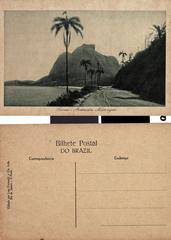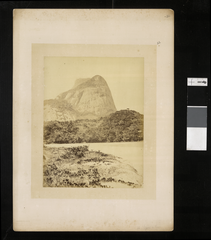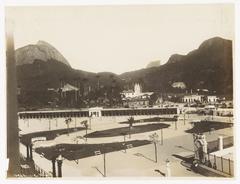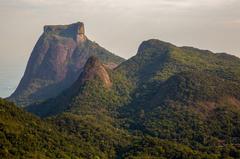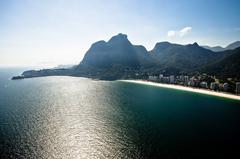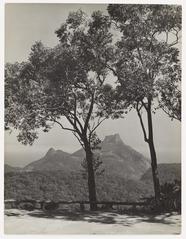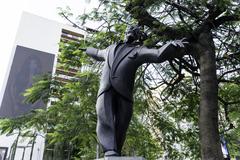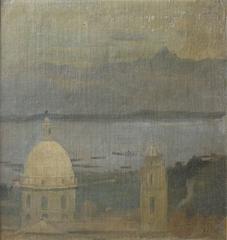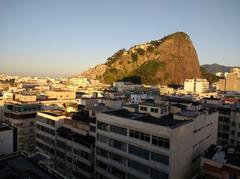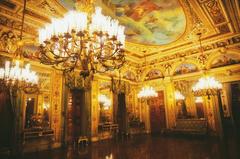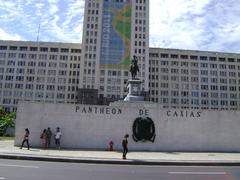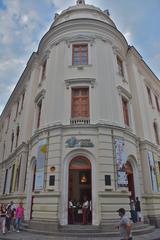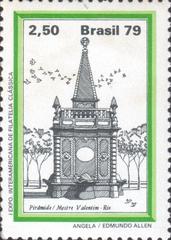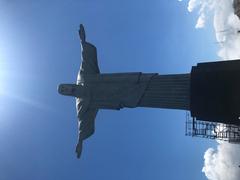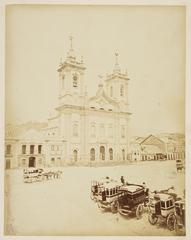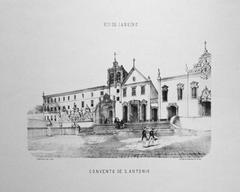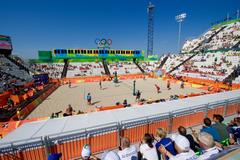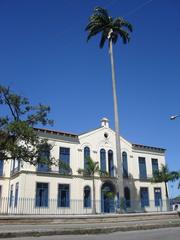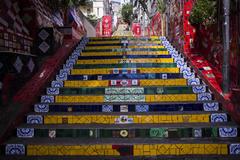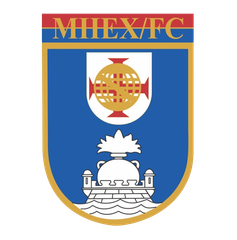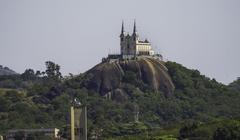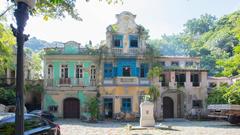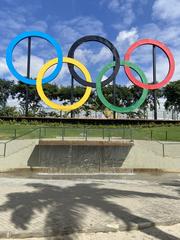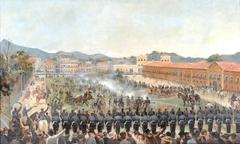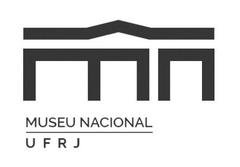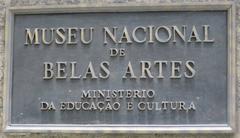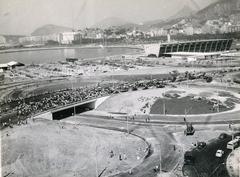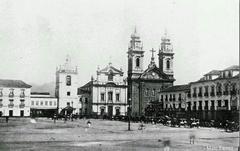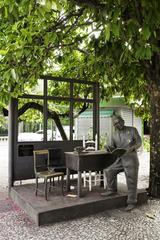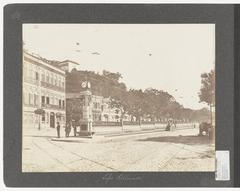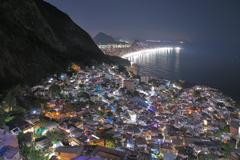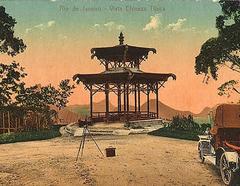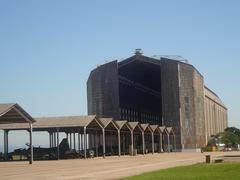
Visiting Trilha da Pedra da Gávea: Hours, Tickets, and Tips
Date: 24/07/2024
Introduction
Pedra da Gávea, a striking monolithic mountain in the Tijuca Forest in Rio de Janeiro, Brazil, stands as a beacon for nature lovers, adventure enthusiasts, and history buffs alike. This guide aims to provide a comprehensive overview of the geological, archaeological, and mythological significance of Pedra da Gávea, along with practical visitor information such as visiting hours and ticket prices. The mountain, estimated to be 500 to 600 million years old, is one of the oldest exposed rock formations globally (Rio & Learn). Its iconic shape, resembling a human face, has sparked curiosity and speculation for centuries, attributed to natural erosive forces acting on the granite (Rio & Learn).
In addition to its geological allure, Pedra da Gávea holds significant archaeological value. British archaeologist Betty Meggers’ 1936 expedition uncovered artifacts and cave paintings dating back to 9,000 years ago, shedding light on the pre-colonial history of the region (Nickey’s Circle). The mountain is also steeped in local legends, such as the myth of a giant sleeping warrior who turned into stone to protect Rio de Janeiro (Nickey’s Circle).
For those seeking adventure, Pedra da Gávea offers a variety of hiking trails and adventure sports. The most popular route, the Carrasqueira trail, presents a challenging climb that demands physical fitness and experience (Nickey’s Circle). The summit rewards hikers with panoramic views of landmarks like Sugarloaf Mountain and the statue of Christ the Redeemer, framed by the lush Tijuca Forest and the Atlantic Ocean (Rio & Learn). This guide will provide you with all the essential information for a safe and memorable visit to Pedra da Gávea.
Table of Contents
- Introduction
- Geological Formation and Age
- Archaeological Discoveries
- Mythological Significance
- Geological Features and Morros
- Panoramic Views and Natural Beauty
- Hiking Trails and Adventure Sports
- Practical Visitor Tips
- Visitor Information – Tickets and Hours
- Special Events and Guided Tours
- Frequently Asked Questions (FAQ)
- Conclusion
Geological Formation and Age
Pedra da Gávea is one of the oldest exposed rock formations in the world. The granite rock formation is estimated to be around 500 to 600 million years old (Rio & Learn). The mountain stands at an impressive 842 meters (2,762 feet) above sea level, making it one of the largest coastal monoliths globally (Nickey’s Circle). Its distinct shape, resembling a human face, has been a subject of fascination and speculation, attributed to natural erosive forces acting on the granite (Rio & Learn).
Archaeological Discoveries
In 1936, an expedition led by British archaeologist Betty Meggers uncovered evidence of human occupation on Pedra da Gávea dating back to 9,000 years ago (Nickey’s Circle). Artifacts and cave paintings from ancient tribes were discovered, providing insights into the pre-colonial history of the region. These findings suggest that the mountain was a site of considerable importance for early human settlers, possibly serving as a place of refuge, worship, or observation (Nickey’s Circle).
Mythological Significance
Pedra da Gávea is steeped in mythology and local legends. One popular myth is that the mountain was once a giant sleeping warrior who turned into stone to protect the city of Rio de Janeiro from invaders (Nickey’s Circle). This mythological narrative adds to the mountain’s allure, attracting tourists and hikers intrigued by its storied past. Some believe the facial features were carved by ancient civilizations, though there is no scientific evidence to support this claim (Rio & Learn).
Geological Features and Morros
In Rio de Janeiro, rock formations like Pedra da Gávea are referred to as “morros.” These formations are characterized by their steep, vertical cliffs and imposing presence, contributing to the city’s dramatic and picturesque scenery (Rio & Learn). Pedra da Gávea’s sheer vertical cliffs and massive granite structure make it a unique landmark, offering valuable information about the Earth’s geological history and the natural forces that have shaped the region over millions of years (Nickey’s Circle).
Panoramic Views and Natural Beauty
One of the most rewarding aspects of visiting Pedra da Gávea is the panoramic views it offers from the summit. On clear days, visitors can see iconic landmarks such as Sugarloaf Mountain and the statue of Christ the Redeemer on Corcovado. The Atlantic Ocean’s sparkling waters provide a stunning contrast to the lush green vegetation that blankets the mountainside (Rio & Learn). The Tijuca Forest, one of the largest urban forests in the world, surrounds Pedra da Gávea, adding to its natural beauty and biodiversity (Rio & Learn).
Hiking Trails and Adventure Sports
Pedra da Gávea is a popular destination for hikers and adventure sports enthusiasts. The mountain offers several hiking trails with varying levels of difficulty. The most popular route is the Carrasqueira trail, a challenging 2-3 hour climb up the mountain’s face, requiring a high level of fitness and experience (Nickey’s Circle). For those seeking adventure sports, Pedra da Gávea offers paragliding and hang gliding opportunities, as well as rock climbing and rappelling (Nickey’s Circle).
Practical Visitor Tips
Visiting Pedra da Gávea requires physical fitness and mental preparedness. Regular exercise and endurance-building are advisable before attempting the hike. Familiarize yourself with the trail route and difficulty level to mentally prepare for the ascent. Safety should be a top priority; if uncertain about your abilities or encountering challenging sections, do not hesitate to turn back or seek assistance from a guide (Rio & Learn).
Visitor Information - Tickets and Hours
Pedra da Gávea is accessible year-round, but it is best visited during the dry season (May to October) to avoid slippery trails. There is no official entrance fee, but some guided tours may charge a fee. It is advisable to check with local tour operators for the most up-to-date information on ticket prices and visiting hours. The site can be accessed from sunrise to sunset, providing ample time to explore and enjoy the surroundings (Rio & Learn).
Special Events and Guided Tours
Special events and guided tours are often available, offering unique insights into the mountain’s history, geology, and ecology. These tours provide a deeper understanding of Pedra da Gávea’s significance and are highly recommended for first-time visitors. Photographic spots are abundant, with many visitors capturing the stunning landscapes and panoramic views from various points along the trail (Nickey’s Circle).
Frequently Asked Questions (FAQ)
Q - What are the visiting hours for Pedra da Gávea? A - Pedra da Gávea is accessible from sunrise to sunset. It is advisable to start the hike early in the morning to avoid the midday heat.
Q - Are there any entrance fees for Pedra da Gávea? A - There is no official entrance fee, but guided tours may charge a fee.
Q - What should I bring for the hike? A - It is recommended to bring sufficient water, snacks, sunscreen, a hat, and sturdy hiking shoes. A first aid kit and a fully charged mobile phone are also advisable.
Q - Is it safe to hike Pedra da Gávea alone? A - While it is possible to hike alone, it is safer to hike with a group or hire a local guide, especially if you are unfamiliar with the trail.
Conclusion
Pedra da Gávea’s historical and geological significance, combined with its natural beauty and adventure opportunities, make it a must-visit destination in Rio de Janeiro. The mountain’s ancient rock formations, archaeological discoveries, and mythological narratives add to its allure, creating a truly unforgettable experience for visitors. Whether you are a nature lover, a history enthusiast, or an adventure seeker, Pedra da Gávea offers something for everyone.
For more information and updates, follow us on social media or visit our website. Download our mobile app Audiala to enhance your visit with interactive maps and guided tours.
